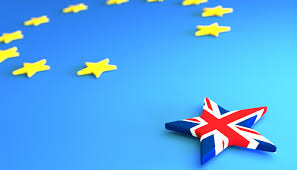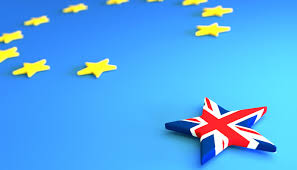
For the European Union, the next best thing could be Donald Trump's ditching of a U.S.-led trade alliance with Pacific Rim nations even if wasn't a gift to the EU.
The United States was effectively pulled out of the race to frame global trade rules by the president's decision on his first day in office. The EU has an opportunity to become the top setter of common business standards in a series of new deals with Washington preoccupied by an attempt to renegotiate its existing NAFTA treaty with Canada and Mexico.
After a long economic crisis and Britain's vote to leave the union, the EU is recovering its self-confidence and is still the world's biggest trading bloc. And while a far-reaching pact with Canada will already enter force in September, now it has much of Asia and Latin America in its sights for trade treaties.
After being dumped by Trump's scrapping of the 12-nation Trans-Pacific Partnership (TPP) free-trade accord in January, Japan turned to the Brussels this month to seal a deal on creating the world's biggest open economic area.
the change of fortunes was acknowledged by EU trade chief Cecilia Malmstrom - who until Trump's election had been struggling to persuade Tokyo to agree tough trade-offs.
"I do not regard President Trump as a gift maybe, but it is true that many countries have started to look around more broadly," she said. "Other countries feel that they need to look out for new friends and other allies, so yes, it has increased interest in cooperation with Europe and with others."
Negotiations now focus more on agreeing common standards because import tariffs are already low between developed economies. Avoiding the need to tailor-make products to meet varying local rules, be they for cars or cheese, the aim is to make it easier and cheaper for firms to do business in differing markets.
The battle has largely been between U.S. and EU standards as a template for deals governing how goods and services are bought and sold even while China is seeking greater influence.
Economists say that in the years to come, provided it embraces a rules-based global trade order, Beijing may yet rival Europe.
While pressing ahead with Australia, New Zealand and Asian countries including Malaysia - also left high and dry by the TPP collapse - and Indonesia, Mexico and the Mercosur group led by Brazil and Argentina as well as Japan are being pushed by the EU to conclude deals by this year.
And according to EU data, from 18.8 percent a decade earlier, the EU's share of global trade in goods and services has fallen to 16.8 percent in 2016 and Europe is still struggling with low economic growth and high unemployment.
When Britain - the world's fifth biggest economy - departs the EU in 2019, it risks losing its top spot unless the EU can reverse the trend. Last year, China’s share of the global trade was 13.4% and the U.S. share was 15.0 percent.
And therefore, even though these take time to negotiate and win legislative approval, Brussels is pinning its hopes on a boost from new treaties.
Markets of more than two billion people producing nearly half of global economic output would be linked if all goes well with the EU's existing and planned pacts. Stalled negotiations with the United States and India would be excluded from that.
Although Trump says he wants to clinch one with Britain when it leaves the EU, but fewer than 700 million people, with no new deals near completion, the United States' existing trade treaties encompass a third of world output.
(Source:www.reuters.com)
The United States was effectively pulled out of the race to frame global trade rules by the president's decision on his first day in office. The EU has an opportunity to become the top setter of common business standards in a series of new deals with Washington preoccupied by an attempt to renegotiate its existing NAFTA treaty with Canada and Mexico.
After a long economic crisis and Britain's vote to leave the union, the EU is recovering its self-confidence and is still the world's biggest trading bloc. And while a far-reaching pact with Canada will already enter force in September, now it has much of Asia and Latin America in its sights for trade treaties.
After being dumped by Trump's scrapping of the 12-nation Trans-Pacific Partnership (TPP) free-trade accord in January, Japan turned to the Brussels this month to seal a deal on creating the world's biggest open economic area.
the change of fortunes was acknowledged by EU trade chief Cecilia Malmstrom - who until Trump's election had been struggling to persuade Tokyo to agree tough trade-offs.
"I do not regard President Trump as a gift maybe, but it is true that many countries have started to look around more broadly," she said. "Other countries feel that they need to look out for new friends and other allies, so yes, it has increased interest in cooperation with Europe and with others."
Negotiations now focus more on agreeing common standards because import tariffs are already low between developed economies. Avoiding the need to tailor-make products to meet varying local rules, be they for cars or cheese, the aim is to make it easier and cheaper for firms to do business in differing markets.
The battle has largely been between U.S. and EU standards as a template for deals governing how goods and services are bought and sold even while China is seeking greater influence.
Economists say that in the years to come, provided it embraces a rules-based global trade order, Beijing may yet rival Europe.
While pressing ahead with Australia, New Zealand and Asian countries including Malaysia - also left high and dry by the TPP collapse - and Indonesia, Mexico and the Mercosur group led by Brazil and Argentina as well as Japan are being pushed by the EU to conclude deals by this year.
And according to EU data, from 18.8 percent a decade earlier, the EU's share of global trade in goods and services has fallen to 16.8 percent in 2016 and Europe is still struggling with low economic growth and high unemployment.
When Britain - the world's fifth biggest economy - departs the EU in 2019, it risks losing its top spot unless the EU can reverse the trend. Last year, China’s share of the global trade was 13.4% and the U.S. share was 15.0 percent.
And therefore, even though these take time to negotiate and win legislative approval, Brussels is pinning its hopes on a boost from new treaties.
Markets of more than two billion people producing nearly half of global economic output would be linked if all goes well with the EU's existing and planned pacts. Stalled negotiations with the United States and India would be excluded from that.
Although Trump says he wants to clinch one with Britain when it leaves the EU, but fewer than 700 million people, with no new deals near completion, the United States' existing trade treaties encompass a third of world output.
(Source:www.reuters.com)





